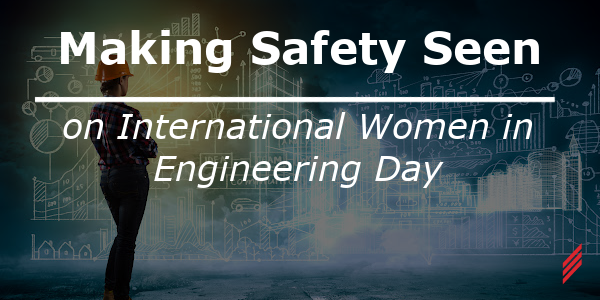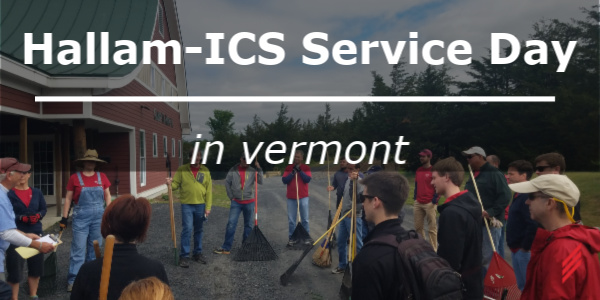5 Ways Managing a TGMS Project in a Semiconductor Facility Is Different
by Kristian Montenegro on Aug 28, 2025 10:30:00 AM
![]()
When I first joined Hallam-ICS, I stepped right into the fire, figuratively and, in some ways, literally. I was the senior project manager for a large semiconductor facility, responsible for the full installation of its Toxic Gas Monitoring System (TGMS).
Coming from a manufacturing background, walking into that semiconductor cleanroom was like stepping into another world. It was clean, complex, and buzzing with precision. Stainless steel ran along the ceilings like arteries. High-purity gas cabinets lined the walls. It was incredible… and also a little terrifying.
That’s because the gases used to make microchips aren’t just exotic, they’re dangerous. I remember learning about hydrofluoric acid (HF), one of the many hazardous process gases used in the semiconductor fabrication process. It can seep into your skin, travel through tissue, and start dissolving bone. That sticks with you.
From that moment on, TGMS work took on a new weight. This isn’t just another controls project, it’s a life safety system, and managing it comes with its own set of challenges. Over the years, our team has learned that overseeing TGMS installations is a different kind of responsibility altogether. Here are five reasons why.
- Safety Is the Mission
On every job, safety matters. But in TGMS, safety is the entire reason the system exists. You’re not just installing a set of devices, you’re building a first line of defense against some of the most dangerous substances used in any industry.
Every step of a TGMS project, from system design to sensor calibration, is about keeping people safe. That responsibility weighs heavily, in the best possible way.
-
There’s No Skipping Steps
With a Toxic Gas Monitoring System, there’s no room for improvisation. Every gas detector, every cable pull, every termination, and every test must be done to exact specifications. There are no shortcuts.
In typical automation work, there’s sometimes flexibility to adjust in the field. But TGMS commissioning has to follow strict procedures, semiconductor safety standards, and documented protocols because people are depending on it. When time is short (and it usually is), the team still has to slow down and do it right.
-
You’re Always Last in Line
TGMS systems are often among the last things to be started up in a fab, after construction, after mechanicals, and sometimes even after tool hook-up begins. That means schedules are already compressed by the time the system hits the floor.
As a result, the TGMS team is under immense pressure to move quickly while navigating an active, crowded environment. The stakes are high: any delay in tool qualification can cost the client millions (or even more) in lost production time. Managing this requires tight coordination, flexibility, and rock-solid planning.
-
You Need Thick Skin
TGMS project managers and integrators work in one of the most high-pressure environments out there. The semiconductor industry moves fast. Every day of delay can impact downstream deliverables and, in some cases, client relationships worth millions or even billions of dollars.
That pressure is felt at every level of the site. Tempers can flare, deadlines loom, and the team is often caught in the middle, expected to deliver perfection, fast.
To add to the challenge, TGMS is often misunderstood by those outside the controls and safety systems world. We’ve had people say, “Can’t you just make the 1 a 0?”, not realizing the depth of designing, programming, quality checks, testing, and documentation that goes into building and validating a safety-critical system.
That’s where experience, composure, and a steady hand come in. You need thick skin, not to push back, but to stay steady, lead with clarity, and help everyone stay focused on the real goal: delivering a system that protects lives.
-
The Integrator Should Lead the Project—Especially When They’re Also the Designer
When it comes to large TGMS installations, it’s critical that the system integrator leads the charge.
TGMS work crosses multiple disciplines: instrumentation, electrical, mechanical, software, networking, and commissioning. Without a unified lead, someone who understands the full system end-to-end, things fall through the cracks. Miscommunication between trades, overlapping scopes, and unclear accountability can all delay the project, compromise system integrity, cost a lot of money, and most importantly put lives at risk.
It’s even more effective when the integrator is also the design engineer, something Hallam-ICS offers as an in-house capability. When the same team designs, installs, and commissions the system:
- The intent behind the design is preserved through every phase
- Field changes are resolved faster, with no finger-pointing
- There’s a tighter feedback loop between engineering and implementation
- Commissioning moves more efficiently because the team knows the system inside and out
This vertical integration reduces risk, saves time, and improves system reliability. You’re not just hiring a contractor; you’re bringing in a partner who’s been with the system from Day One.
TGMS is too important to leave to fragmented teams. You need a single point of responsibility and when the integrator and design team are one and the same, you get better outcomes and a safer, more efficient project.
Final Thoughts: Why It Matters
When I was helping manage that first TGMS project, my son was just a little guy, and he LOVED firetrucks. Every night, we’d read books about firefighters; the ones who run toward danger to keep people safe.
One day, he asked me what I did at work. I paused and said:
“I help make sure people get home safe.”
He smiled and said, “So… kind of like a firefighter?”
I smiled too. It was a kid’s way of connecting the dots, but there was something meaningful in it.
No, we’re not firefighters. But the work we do, together, as engineers, project managers, integrators, and safety professionals, plays a vital role in protecting others. TGMS project work is demanding, technical, and often overlooked, but it’s critical.
When we lead with care, discipline, and a commitment to doing things the right way, we’re not just closing out a punch-list, we’re delivering a system people rely on every day to stay safe.
At Hallam-ICS, that’s the purpose behind what we do and it’s something we take pride!
About the Author
Kristian Montenegro is the Chief Commercial Officer (CCO) at Hallam-ICS, where he leads commercial strategy and fosters long-term client relationships across the semiconductor, life sciences, and industrial markets. With a strong background in project and engineering management, Kristian brings deep expertise in Toxic Gas Monitoring Systems, Industrial Controls, and MEP Engineering. A proud graduate of Rensselaer Polytechnic Institute and Clarkson University, he remains actively involved with the engineering community and is passionate about creating value through thoughtful, client-focused collaboration.
Read My Hallam Story
About Hallam-ICS
Hallam-ICS is an engineering and automation company that designs MEP systems for facilities and plants, engineers control and automation solutions, and ensures safety and regulatory compliance through arc flash studies, commissioning, and validation. Our offices are located in Massachusetts, Connecticut, New York, Vermont and North Carolina, Texas and Florida and our projects take us world-wide.
You May Also Like
These Related Stories

Making Safety Seen on International Women in Engineering Day

My Journey Interning with Hallam-ICS




No Comments Yet
Let us know what you think